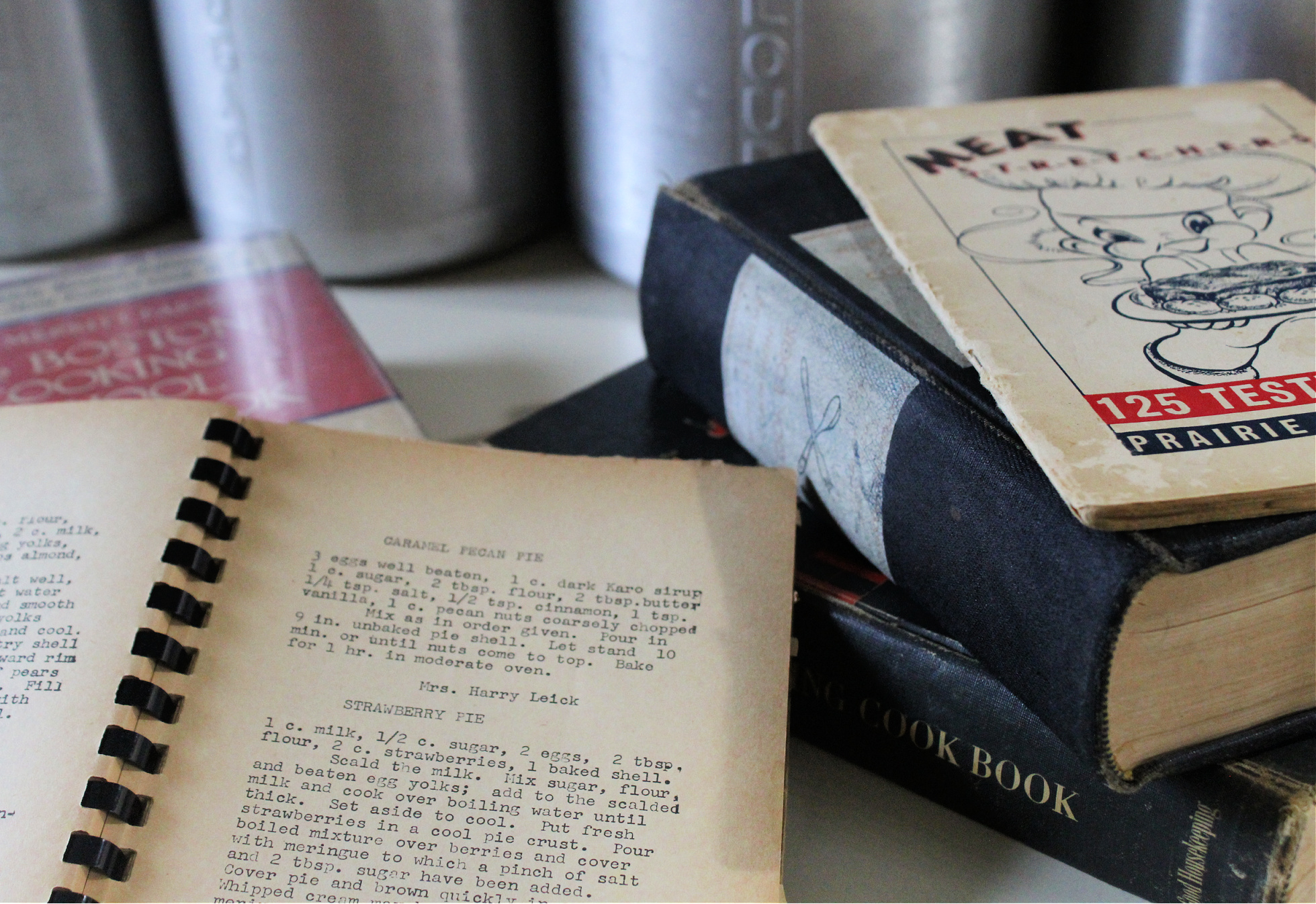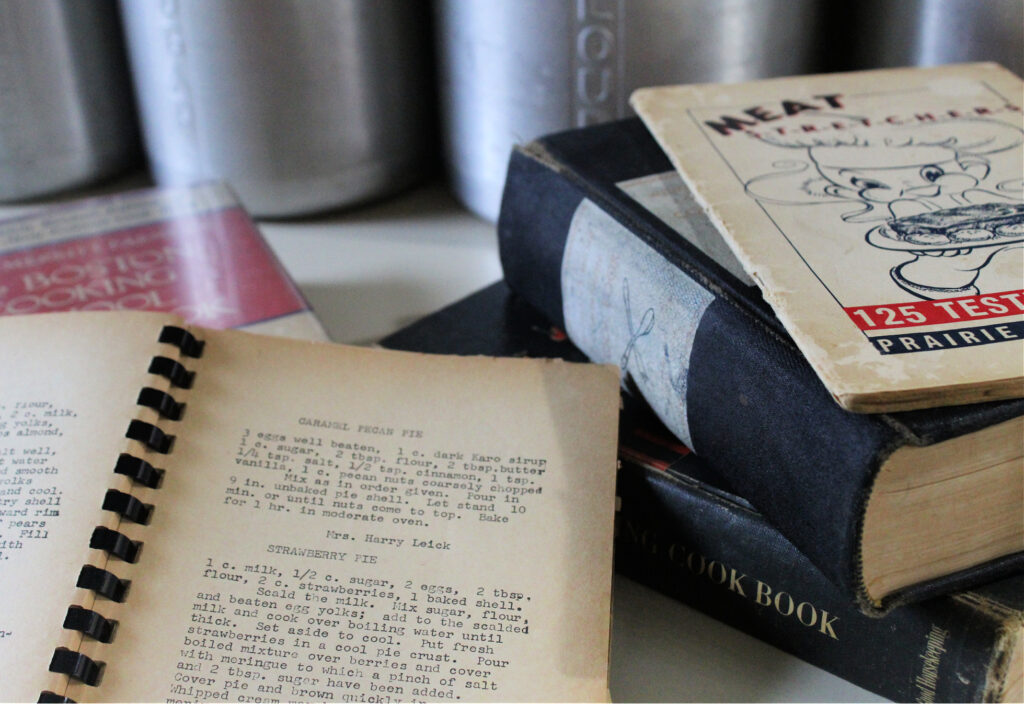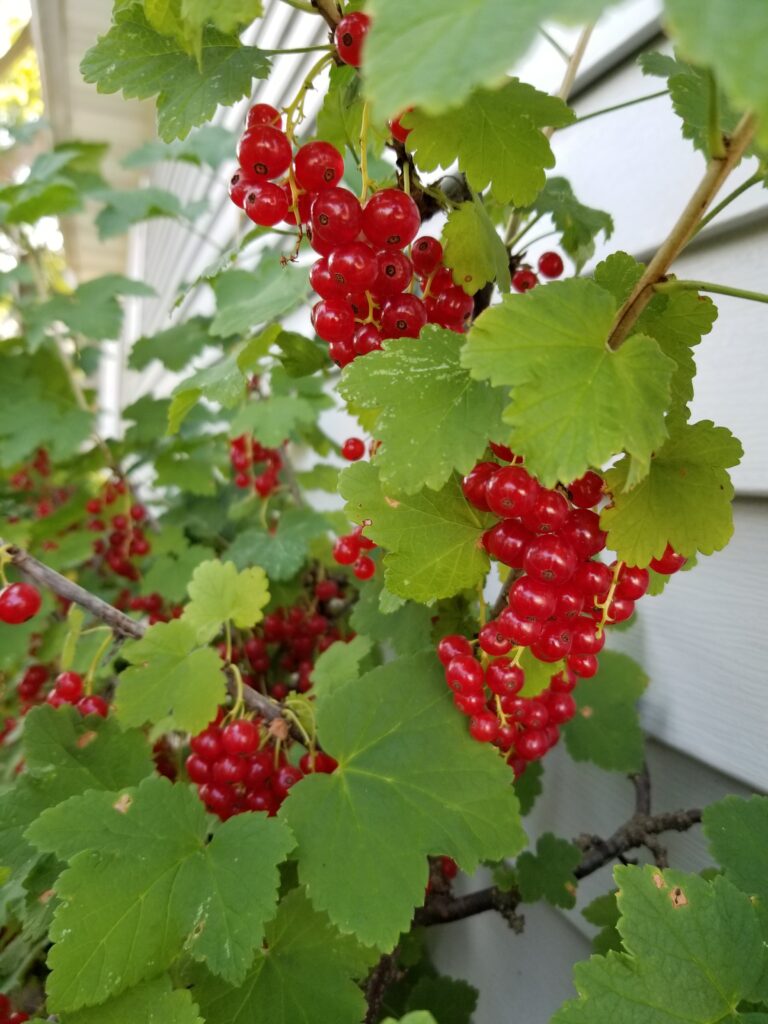
This post contains affiliate links. Read our disclosure policy here.
Vintage cookbooks will always have a place in my kitchen. (They may have even taken over, actually…)
On my 9th birthday, I received my first “very own” cookbook and there began my love of cooking and cookbooks. Snickerdoodles, pumpkin custard, and hot milk sponge cakes were my early specialties. Over the years, I’ve added extensively (ahem) to my cookbook collection, but my special interest is in old ones–those dating from the 1960s and earlier.

the history
One of the reasons for my interest in old cookbooks is my fascination with history. Not so much the wars and explorations, but the everyday kind of history, about everyday people–how they worked, interacted, and just lived. In their own way, cookbooks are a kind of diary, reflecting lifestyles and the economics of the day through food.
Some time ago, I decided that instead of just reading cookbooks for fun, I would use them and actually cook the recipes in them. (I know!! What will I think of next?!) I occasionally document some of them here on this blog and will continue to do that as I find the very best of vintage dishes.
I was born in the late 1970s–way after the “good old days,” in my opinion. But what better way to experience an earlier time than by eating its cuisine, its “daily bread?” Shopping for the same ingredients and making the same recipes that my Grandma did will let me experience a bit of her world in these days very far removed from that time.
they way they cooked
I have found that older cookbooks use “real” basic ingredients, like butter, lard, eggs, and cream instead of modern “quick and easy” recipes that rely on heavily processed ingredients and factory produced mixes. I prefer to cook from scratch, not just assemble a dish.
The recipes use fewer ingredients, which I always appreciate. They’re usually much simpler and often rather bland so they make a good foundation to add my own tweaks.
No, you won’t want try every recipe because some just sound outdated. Also, not every recipe you’ll try will be good. Modern tastes are definitely different and more authentic to different cultures. (For the record, oregano does not make a dish “Italian,” nor do bean sprouts automatically make a dish “Chinese.”)
useful for gardeners
The recipes in old cookbooks use many ingredients that you could potentially grow in your garden. If you’re a gardener, this is ideal. If your garden blesses you with an over-abundance, sometimes you need to add a little creativity so your produce doesn’t get neglected and go to waste. Vintage cookbooks offer incredibly creative ideas.

Someone once offered me her entire harvest of red currants–a substantial amount. I’d heard of currant jam but had never made it or even tasted it. So I sat down with a stack of assorted vintage cookbooks. I found that nearly all of them contained at least one recipe that called for red currants. I compiled a list of red currant recipes that looked interesting and worked my way through them.
Use the same strategy any time you come into a bonanza, whether it’s your garden produce or a sale at the grocery store. Who knew there were multiple ways to serve radishes? Or parsnips? Kohlrabi? You’ll also discover new uses for more basic produce, like apples and potatoes.
…and canners
Modern sized jars, cans, and packaging don’t correspond with home-canned products. Have you ever heard of “shrinkflation?” It’s the phenomenon of selling products in smaller and smaller quantities while maintaining (or raising) the prices. You get less for your money and you often don’t even notice the change.
What was once commonly a pound can (16 oz) now varies widely. Take a quick look through all the cans in your cupboard and few, if any, of them are actually 16 oz. Canning jars, on the other hand, come in standard sizes–1 quart, 1 pint, and 1 cup. Yes, many times it doesn’t matter to have a few tablespoons more or less but sometimes, like in dessert recipes, the difference really can affect a recipe.
Modern recipes have been adjusted to account for smaller quantities. I like using recipes that call for ingredients in the same amounts that I can them.
look for these vintage cookbooks
While cookbooks written in the 1800s and earlier are interesting to read, they’re less useful for actual use. There’s too much of a disconnect between cooking tastes, available ingredients, and equipment for practical modern use.
The vintage cookbooks from the early 1900s are the real treasures. Here are a few old cookbooks that I own and turn to the most often for inspiration. Many of them are out of print, so keep an eye out for reasonably-priced used copies on Amazon or Ebay.
The Household Searchlight Cookbook–from the 1930s, it has an interesting collection of basic recipes. One of my favorite versatile pie recipes comes from this cookbook.
Mary Margaret McBride Encyclopedia of Cooking –you can find it either in 12 separate volumes or 1 large book that contains all the individual volumes.
Culinary Arts Institute Encyclopedic Cookbook by Ruth Berolzheimer–this one is great because it offers dozens of ways to use one basic ingredient like potatoes or eggs. Then there are pages of ideas for sandwiches or ways to use leftovers. (Note: this is a Kindle version. Try to find a hard copy if you can!)
Joy of Cooking–the original 1931 edition.
Happy cooking and be watching this blog for more vintage recipes!
Discover more from A Housewife Writes
Subscribe to get the latest posts sent to your email.
6 Comments;
I enjoyed your post. I remember those copper jello molds. My mom called them “congealed salads”. Doesn’t that sound appetizing?
Haha! I don’t know what sounds LESS appetizing than a congealed salad!
I have several old cookbooks from relatives. My favorites are the ones that include the how-to of entertaining whether it be a dinner party, shower, or a Bridge luncheon. Then, they suggest several recipes. Some sound just horrible and make me laugh at the idea of putting them in front of my friends. One had a jellied fish thing that was done like a jello mold in a copper fish. **Shudders**. I think cats would go bananas!! Others are simple tea sandwiches and punch. They’re homemaker history books!
I love all the entertainment menus! They’re so interesting.
Oh, the jello salads…. a few years ago, my mother-in-law thought she’d make one. I remember it was lemon jello with black olives, salami, and some other vegetables. When we worked up the courage to try it, we were pleasantly surprised. I could see why it was popular at one time as a light summer meal. Have I tried to make one myself? No, I still just can’t….just can’t.
I love old cookbooks. You gave some excellent reasons for why they are beneficial to us. I also appreciate your mention of how wonderful it is to think of the history of home life during the time period each cookbook was published. Thank you for the inspiration!
You’re very welcome! Everything from rationing during the World Wars to the rise of convenience food and the era of entertaining is documented in a tangible way through cookbooks–better than any textbook!